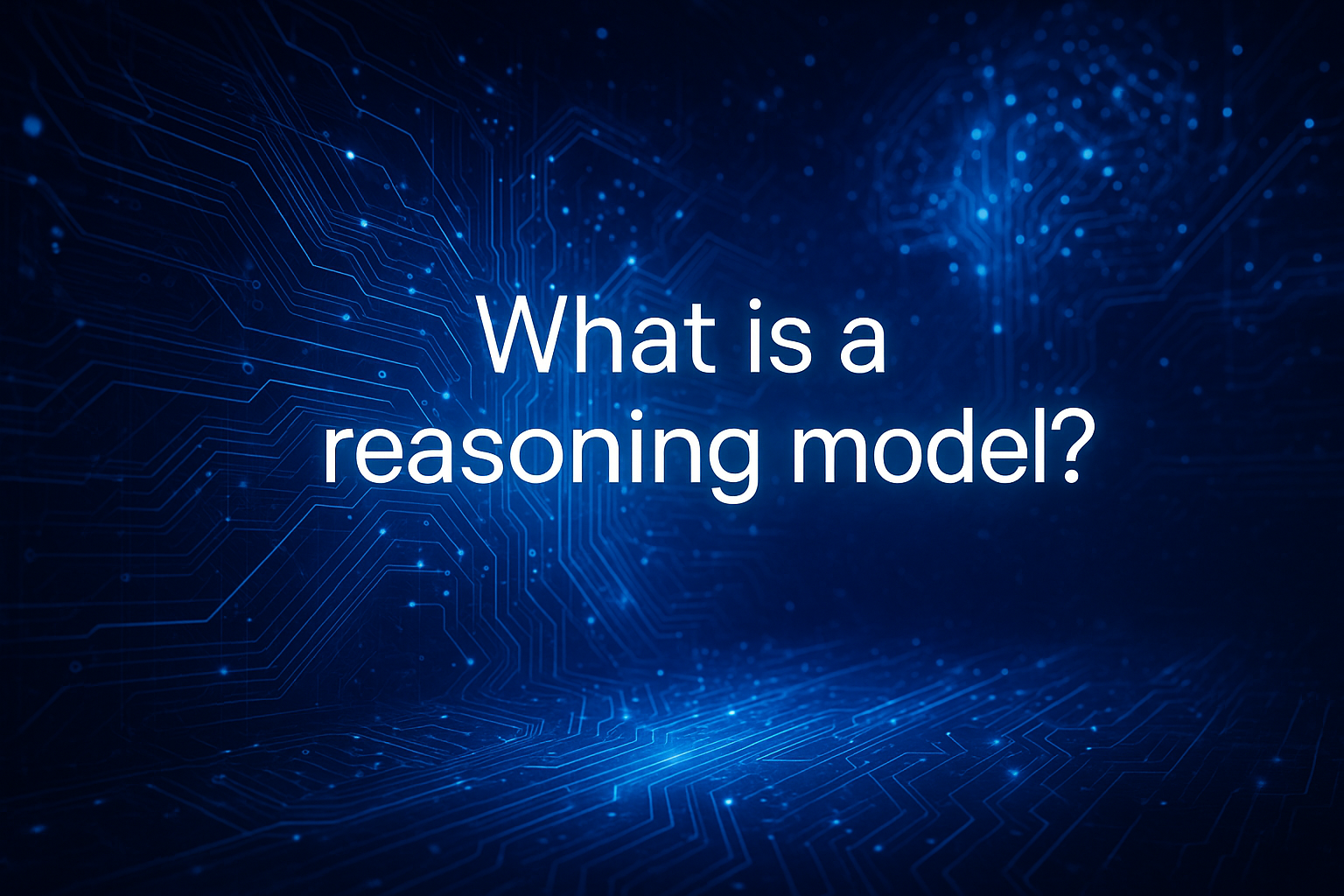What is a reasoning model?
AI models have started to learn to think. A lot.

The recent launch of reasoning model technology transformed the AI business at a stroke.
The new methodology involves giving AI models the time to think about their initial response, evaluate and refine it internally and output a more reasoned answer to the user.
Instead of rushing to produce the fastest response to a user query, these new reasoning models can take minutes to consider all the options involved before giving their results. This process is typically referred to as “thinking” or “reasoning.”
From chains to freedom
The new concept is actually a logical progression from the already heralded 'chain of thought' models, which are designed to provide the user with a demonstration of how they arrive at their answers using a logical sequence of steps.
The reasoning process adds another layer of internal validation to any response the model derives.
We can think of it as an internal dialogue where the model uses a series of thoughts, considerations, and most importantly, re-evaluations to the process of delivering an output.
It's important to stress here that when we talk about reasoning and thought, we are glossing over the fact that any large language model AI is still no more than a computer crunching through bits and bytes at an unimaginably fast speed.
Sign up to the TechRadar Pro newsletter to get all the top news, opinion, features and guidance your business needs to succeed!
This computer processing translates these digital calculations into tokens, which convert into language, which then delivers the simulation of human thought we see in a neural network. That's what we mean when we say 'thinking'.

Current reasoning models are only possible because of the huge improvement in model optimization, combined with the increase in compute power available to the modern user.
This is because every question-answer session conducted by a reasoning model uses exponentially more tokens and compute calculations than with a standard AI model.
Reasoning models break each task down into smaller parts, apply logical rules, and test possible solutions until a potentially correct one is found. Each of these steps requires a huge amount of computer processing.
One of the key characteristics of a reasoning model is its typical use of symbolic representation. Instead of relying on basic pattern matching, as non-thinking models do, a reasoning model has the power to analyze relationships to a much greater degree. This makes them extremely useful in applications where clarity and reliability is essential.
For this reason domains such as legal, medical diagnosis or strategic planning are increasingly turning to this kind of thinking model to improve their processes. In these cases, the ability to explain the reasoning behind a decision is often as important as the decision itself.
The need for speed
Reasoning models are not suitable for every application. The significantly longer processing times make them completely inappropriate for applications where time is of the essence.
So for example security ID applications, or industrial automation - where every second counts - are completely out of the question for this kind of tech.
In the same way, it would be redundant and irrelevant to implement reasoning in a model designed to deliver advanced creative writing.

Almost all of the major AI system providers such as Google, OpenAI and DeepSeek are now increasing their development of reasoning models.
Some have introduced hybrid models, which combine reasoning with a faster non-thinking option, which can be toggled on and off by the user. This delivers the benefit of both worlds.
When the user needs speed they can switch off thinking, but when they require a more evaluated response they can turn it on. This flexibility is becoming an increasingly popular feature of many of today's cutting edge AI models.
The popularity of these thinking models for a large number of applications, suggests that they are destined to become an essential part of the future of AI systems around the world.

Nigel Powell is an author, columnist, and consultant with over 30 years of experience in the tech industry. He produced the weekly Don't Panic technology column in the Sunday Times newspaper for 16 years and is the author of the Sunday Times book of Computer Answers, published by Harper Collins. He has been a technology pundit on Sky Television's Global Village program and a regular contributor to BBC Radio Five's Men's Hour. He's an expert in all things software, security, privacy, mobile, AI, and tech innovation.
You must confirm your public display name before commenting
Please logout and then login again, you will then be prompted to enter your display name.